For creating and distributing a package and an
advertisement, SMS 2003 includes an alternative tool called the
Distribute Software To Collection Wizard. This wizard walks you through
each step in the process of creating or identifying a package and
program, defining a distribution point, creating or identifying a
collection to a target, and creating an advertisement.
Note
The procedure described below varies slightly depending on where you start the wizard. |
To run the Distribute Software To Collection Wizard, follow these steps:
1. | Right-click
any collection, resource, package, program, or advertisement in the SMS
Administrator Console, choose All Tasks from the context menu, and then choose Distribute Software to launch the Distribute Software To Collection Wizard, shown in Figure 1.
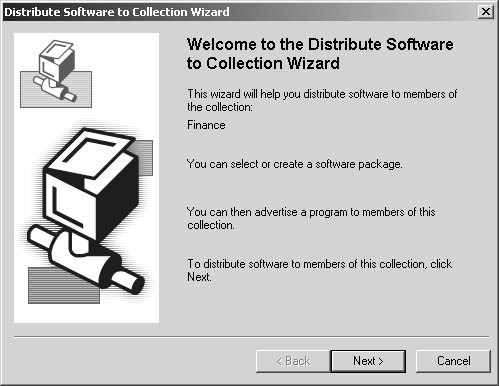
|
2. | Click Next to display the Package page, shown in Figure 2. Here you can create a new package and program from scratch or from a definition file or you can select an existing package.
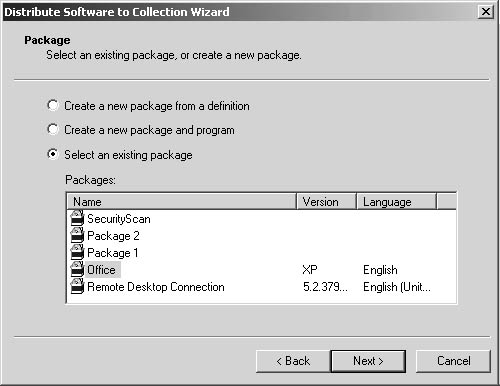
|
3. | Click
Next. The next few pages will vary depending on whether you’re creating
a new program from scratch or from a package definition or by selecting
an existing program. If you selected an existing package, the Select A
Program To Advertise page is displayed, as shown in Figure 3. Select the distribution point that should receive the package source files.
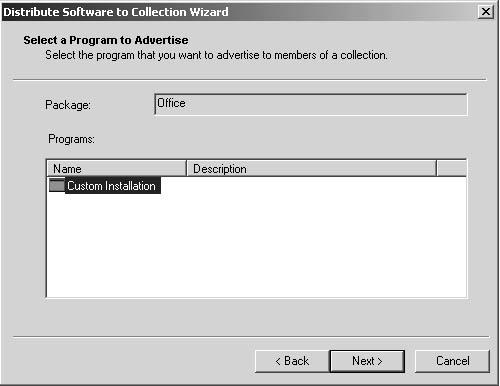
If you selected Create A New Package From A Definition, you’re
presented with pages asking you to select the package definition file
and define the source file directory.
If you selected Create A New Package And Program, the wizard will
prompt you for a package name and identification, the location of source
files (if there are any), the program name and command line, as well as
ask whether user input is required or administrative rights are needed.
|
4. | Click Next. The next few pages prompt for advertisement properties. On the Advertisement Name page, shown in Figure 4, enter a descriptive name and comment for the advertisement.
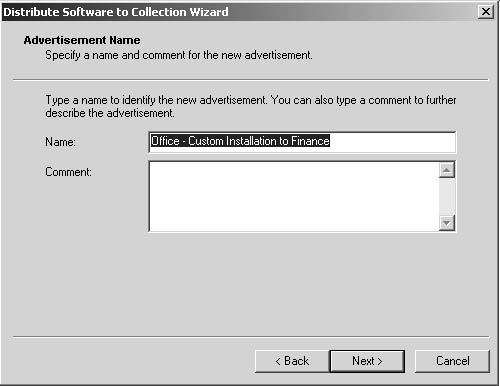
|
5. | Click Next to display the Advertise To Subcollections page, shown in Figure 5. Here you can specify whether to advertise to the collection’s subcollections if any exist.
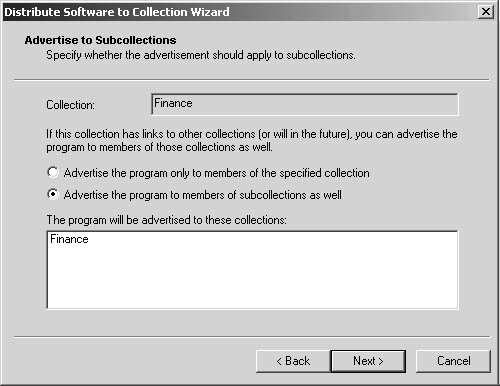
|
6. | Click Next to display the Advertisement Schedule page, shown in Figure 6. This page lets you specify when the advertisement should be offered and whether it expires.
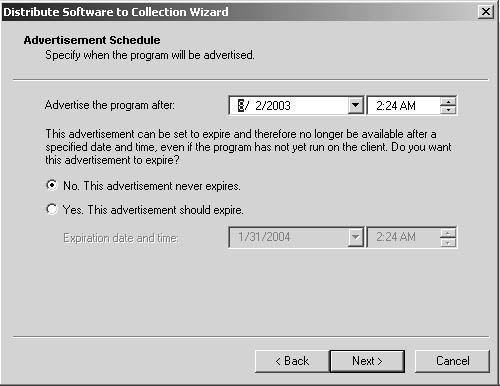
|
7. | Click Next to display the Assign Program page, shown in Figure 7. Here you can specify an assigned time if necessary.
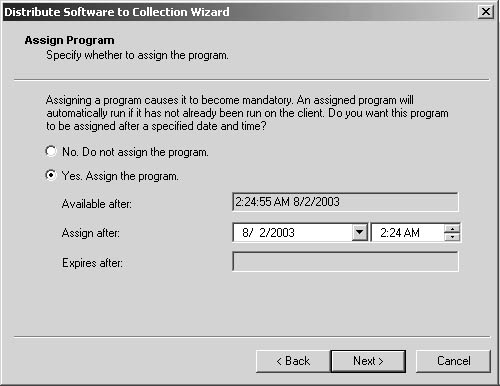
|
8. | Click Next to display the Completing The Distribute Software To Collection Wizard page, shown in Figure 8. Review your selections and then click Finish to begin the package distribution and advertisement processes.
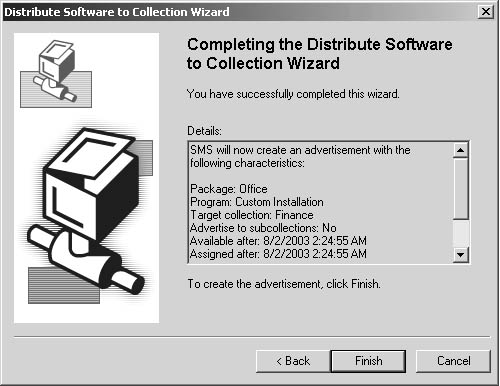
|
As you’ve probably noticed, the Distribute
Software To Collection Wizard doesn’t present you with all possible
options available for packages, programs, and advertisements. For
example, you can’t create a recurring advertisement using this wizard.
However, the wizard does provide a fine method for generating general
packages, programs, collections, and advertisements. There’s also a neat
technique for targeting one computer without having to create a
collection of one: use the wizard to create the collection for you.
Simply start the wizard by right-clicking the computer resource you want
to target.
Note
In
case you were wondering, you can’t use Ctrl+click to select more than
one client at a time in a collection. There is currently no way to
target a group of two or three computers that are part of a larger
membership without creating a separate collection for them. Perhaps
we’ll see this functionality in a future release of SMS. |